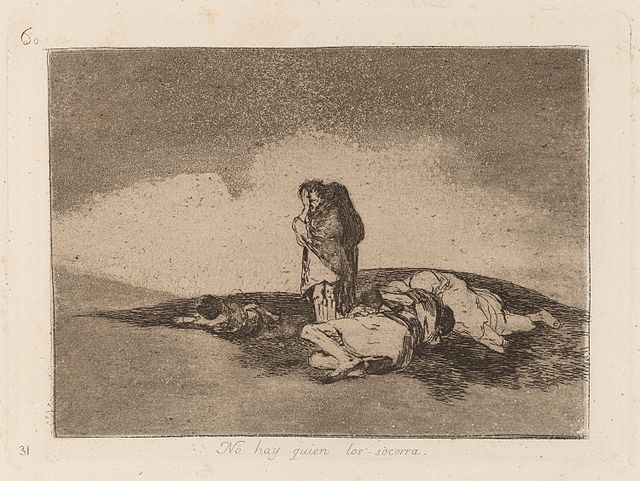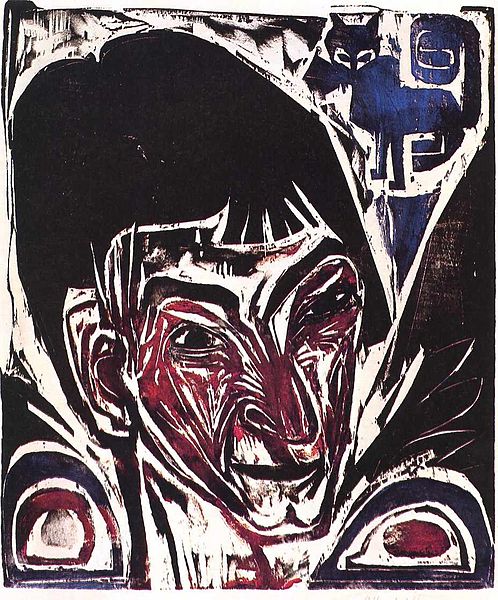An artist's proof is an impression of a print taken in the printmaking process to see the current printing state of a plate while the plate is being worked on by the artist. A proof may show a clearly incomplete image, often called a working proof or trial impression, but in modern practice is usually used to describe an impression of the finished work that is identical to the numbered copies. There can also be printer's proofs which are taken for the printer to see how the image is printing, or are final impressions the printer is allowed to keep.
Eric Gill's proof of Cantet Nunc Lo (1916)
A proof of an etching by Hubert von Herkomer, without text, which would appear in the empty rectangular portion of the page above the artist's signature.
Printmaking is the process of creating artworks by printing, normally on paper, but also on fabric, wood, metal, and other surfaces. "Traditional printmaking" normally covers only the process of creating prints using a hand processed technique, rather than a photographic reproduction of a visual artwork which would be printed using an electronic machine ; however, there is some cross-over between traditional and digital printmaking, including risograph.
Katsushika Hokusai The Underwave off Kanagawa, 1829/1833, color woodcut, Rijksmuseum Collection
Rembrandt, Self-portrait, etching, c. 1630
Francisco Goya, There is No One To Help Them, Disasters of War series, aquatint c. 1810
Ernst Ludwig Kirchner, Portrait of Otto Müller, 1915






